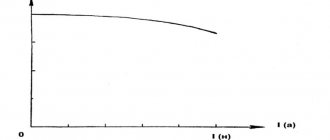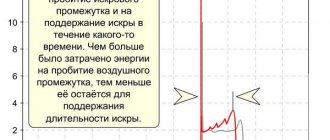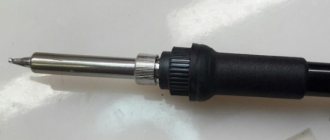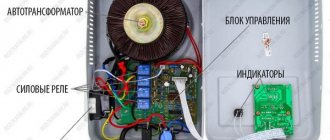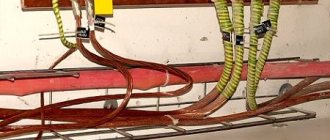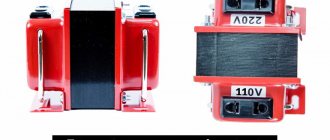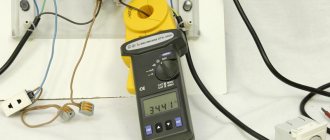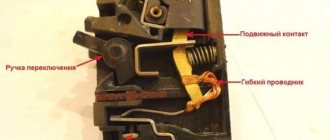How does a ph meter work?
Devices for measuring the acidity/alkalinity of media - ph meters, are popular in many areas of human activity: water treatment, hydroponics, aquarium farming, agriculture, science, microbiological and laboratory research, medicine, chemical, food and other industries.
pH meters are used to monitor drinking water, biological fluids, medications, food and much more.
Probably everyone knows from chemistry lessons that there are acidic (ph less than 7), alkaline (ph greater than 7) and neutral (ph equal to 7 - distilled water) environments.
Experiments with phenolphthalein, litmus, various methyl and other acid-base indicators make it possible to estimate pH, but it is quite rough. It is much more convenient to navigate using digital values, especially if greater accuracy is required. Therefore, the popularity of pH meters is justified.
How does a ph meter work?
In fact, the ph device (“pondus hydrogenii”) measures the activity of hydrogen ions. The operating principle of a pH meter is based on the potential difference that is created in the medium under study between the electrodes of the device (electromotive force). That is why the device is associated with a millivoltmeter. And since the calculated EMF is proportional to pH, then accordingly the calibration occurs in ph. The value is calculated using the Nernst equation. But we don’t need this, since the device is made taking into account all the features.
So, a pair of electrodes and the medium under study are involved in the operation of the pH meter. One of the electrodes is measuring, it is the one that reacts to hydrogen ions, and the second is auxiliary (or comparison).
In modern instruments, the measuring electrode is made of glass, since it can be used over a wide pH range. It is made of borosilicate glass, which is not afraid of oxidizing agents, but at the same time quite thin and electrically conductive. The indicator electrode is a tube with a thin-walled ball at the end, filled with a suspension of silver chloride in a solution of hydrochloric acid. A silver wire is introduced into this medium, which is a silver-silver chloride electrode. Positive hydrogen ions move in the glass.
The reference electrode often contains mercury-calomel paste in a saturated solution of potassium chloride. The electrode body is impenetrable to positive hydrogen ions, and potassium chloride acts as a conductor between the solution and the mercury-calomel half-cell.
To measure the pH of the medium, the electrode of the device is immersed in the solution, and the electrical circuit is closed, while no foreign impurities enter the medium itself. The galvanic circuit is represented by reference electrodes and silver chloride in the test solution. Under the influence of the potential difference, as a result of the transfer of electrons to the reference electrode, an equivalent transfer of protons into the solution from the inside of the electrode occurs. Taking into account the constant concentration of positive H ions inside the glass electrode, the emf reflects the activity of the solution's hydrogen ions, or pH.
What should you pay attention to when operating a pH meter?
The magnitude of the emf depends on temperature, therefore the measuring function of the device depends on the temperature of the solution. It is recommended to carry out measurements at 25 °C to achieve maximum accuracy. Often, modern pH meters are equipped with a built-in thermometer to determine the temperature of the solution.
The automatic temperature compensation (ATC) function will allow you to automatically take into account temperature changes. For glass electrodes, the coordinates of the isopotential point are normalized by the manufacturer.
When choosing a pH meter, be guided by the presence of a temperature compensation function to simplify work with the device.
Thus, we learned “how a pH meter works”: using a pair of electrodes. Modern devices combine both electrodes in one housing and also perform temperature compensation. Technologies and research also make it possible to combine other functions in one building to solve related measurement tasks: determination of ORP, TDS, EC.
Depending on the application environment, you can choose pocket portable pH meters, laboratory, professional with various additional interface capabilities: memory of results, recording of readings, connection to a computer, etc.
It is worth noting that the leading role remains with portable ph meters due to their functionality, convenience and low cost.
pH meter device and principle of operation
| Photo 1 | Photo 2 | Rice. 1 |
Let's look at the operation of a pH meter using the example of the most common device, pH-009. We took it and simply sawed it into two parts, so everything can be seen much more clearly than just theoretical calculations with diagrams.
In Fig. 1 we see 2 compartments, in one compartment there is a reference electrode in the form of a thickened KCl electrolyte (gel), and in the other there is an indicator glass electrode.
The pH indicator electrode is made in the form of a glass tube, one end of which ends in a thin-walled glass ball. The glass membrane material is selected in such a way that this glass allows hydrogen ions to pass through and does not allow other ions to pass through. At the other end, a silver wire coated with a dense layer of silver chloride is immersed into the tube. The tube is filled with a 0.1 M solution of hydrochloric acid HCl, so that the acid completely fills the ball and the wire is deeply immersed in the hydrochloric acid solution.
The contact (membrane) of the reference electrode with the solution can be made in the form of porous ceramics, porous glass, fibrous asbestos mineral or fiber, in this case it is most likely a fiber strand. This electrode maintains a constant potential difference between its output (which is connected to the input of the pH meter) and the point in the solution where its working part is immersed. Its potential relative to the solution does not depend on the presence of other ions in the solution and on the composition of the solution. Through the membrane, when measuring pH, elements of the solution can enter this electrode, and, conversely, part of the electrolyte enters the solution. Therefore, the electrode has a limited service life.
Thus, we get two contacts from the electrodes, one from the reference-zero electrode, the second from the indicator ion-selective electrode. The potential difference between them (voltage) is the pH value we are looking for. But it is very small and a very small current passes through them to be measured with a conventional voltmeter (from +-10 mV to +-500 mV). We see a microcircuit on the board, which does just this, then digitizes and converts it into pH values, which we see on the display.
Afterword
| Photo 3 |
In photo 3 you can see what the electrode gel turned into exactly one day later, being in the open air. It became just pure KCl salt. This is exactly what happens to it in a pH meter if it is not stored in a storage solution for a long time, or is simply not used. As for pH-009 specifically, it became unusable (the electrolyte dried out) if not used after three years.
The yellow inclusions in it are simply “sawdust” of the plastic housing that got into the gel when sawing the pH meter housing.
Comments
Lelik » 12/14/2017 11:17
thank you. very informative +2 Lelik
Update list of comments
.
Latest news:
- Briefly about PH and TDS meters
- Temperature compensation pH or ph meter atc
In old articles:
- Extending the life of budget TDS meters
- Concentration of the nutrient solution. Difference between TDS and EC meters. Calibration
- Methods for restoring pH electrodes and working with them
- Nutrient solution acidity and its control
- Preparation of a nutrient solution from ready-made Flora Series concentrates
Next page about hydroponics>>
Device pH meter pH 150mi: fast and accurate measurement of the pH level of aqueous solutions
The pH meter pH 150mi device is used to control the level, temperature and value of the redox potential of liquid technological media based on water, aqueous solutions, waste and natural waters. This is a modern, lightweight and compact microprocessor device. It is easy to use, its configuration and management, thanks to the interactive mode, are not difficult even for an inexperienced user.
You can detect the presence of mercury vapor in the environment and determine the source of pollution using a mercury analyzer UKR 1MC. This is practically the only way to protect against mercury poisoning, since the vapors have neither odor nor color.
pH-150MI is available in the following modifications:
- pH-150MI
- pH-150MI (without tripod)
- pH-150MI (mini-laboratory)
- pH-150MI (with meat knife)
| Number in the State Register No. 29671-09. Calibration interval 1 year Is verification required? PRESS! | |
| Number in the State Register No. 29671-09. Calibration interval 1 year Is verification required? PRESS! | Delivery time: within 30 days |
| Price: | 16 200 ₽ | Cost of pH-150MI with initial verification | Buy | Delivery time: within 30 days | |
| Price: | 15 600 ₽ | Cost of pH-150MI (without tripod) with initial verification | Buy | ||
| Price: | 20 100 ₽ | Cost of pH-150MI (mini-laboratory) with initial verification | Buy | ||
| Price: | 18 900 ₽ | Cost pH-150MI (with meat knife) with initial verification | Buy |
Features of pH meter pH-150MI:
pH meter pH-150MI is a modern microprocessor device. Compact, lightweight, autonomous and economical. The pH meter is easy to set up and control, convenient to use:
- pH-150MI microprocessor device has no mechanical controls, which eliminates the possibility of accidental settings failure.
- The pH meter is housed in a dust and waterproof housing. Self-powered, it can be used in field conditions.
- The pH meter is easy to use and operates interactively using prompts for the operator. Automatic diagnostics of electrode system parameters.
- The use of interchangeable temperature sensors allows no adjustments to be made when replacing them
- The pH meter complete with everything you need to carry out measurements, incl. combined electrode ESK-10603/7 and tripod SHU-05, equipped with a rotary table.
- A pH meter allows you to clarify the coordinate values of the isopotential point of the electrode system used.
- The pH meter allows you to store 30 results in memory and stop the measurement process while maintaining the current readings on the display.
- Automatic recognition of any of the standard calibration solutions pH: 1.65; 4.01; 6.86; 9.18; 12.43 makes it easier to calibrate the pH meter .
All pocket pH meters have:
- compact dimensions;
— the housing of pH meters is made of plastic;
— presence of an LCD display;
— the electrode is part of the device (not carried out through a cable);
— devices can operate autonomously, there is no need to use an electrical network;
Different models may have the following differences:
— pH measurement range (usually 0-14 pH, but there may be other ranges);
— Resolution of measured values (division value) - inexpensive models have a resolution of, as a rule, 0.1 pH, more expensive ones measure with a resolution of 0.01 pH;
— Measurement accuracy: varies, as a rule, from 0.1 to 0.01 pH. For most tasks, an accuracy of +/-0.1 pH is sufficient.
— Availability of a replaceable or built-in electrode. It is better to choose a model with a replaceable electrode, because... The service life of the electrode is 1-2 years, depending on the intensity of work.
— Moisture resistance: more expensive models have protection against moisture;
— Availability of additional measurement functions. For example, temperature, redox potential, electrical conductivity, etc.;
— Calibration type. Calibration can be carried out at one or more points, and automatic recognition of the pH values of calibration solutions is possible. As a rule, the delivery set includes a small screwdriver, with which you tighten the screw and set the pH value corresponding to the calibration solutions.
— Delivery set: calibration solutions are often not included in the delivery set. When choosing a device, pay attention to this, because... Calibration must be performed periodically.
— Availability of automatic temperature compensation (ATC). The pH value depends on temperature, so devices with the ATK function have higher reproducibility.
— Entry into the register of measuring instruments (MI). If a pH meter costs one or two thousand rubles, we can say with great confidence that it is not included in the SI register.
— The price of a pH meter: in rubles can vary from 1 to 30 thousand. The price depends on many parameters. To select a device and clarify the cost, you can always contact the author of this blog.
